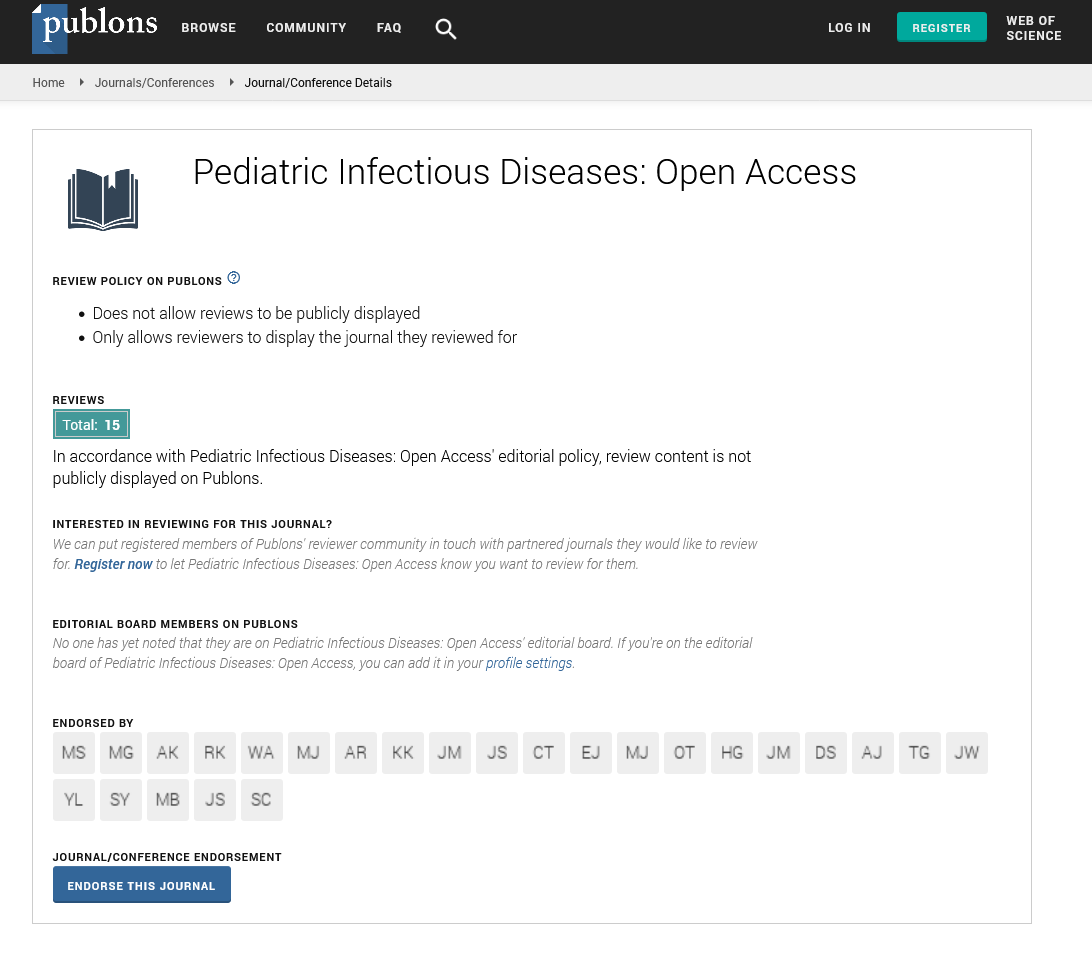Abstract
Clinico-laboratory Profile and Therapeutic Outcome of Serologically Confirmed Scrub Typhus in Children in Tertiary Care Children's Hospital of Nepal
Introduction: Scrub typhus is an acute febrile illness endemic to tsutsugamushi triangle including Nepal. The WHO identifies scrub typhus as a re-emerging disease in South-East Asia. Scrub typhus can have varied manifestations in children. We aimed to study clinicolaboratory profile and therapeutic outcomes of serologically confirmed scrub typhus in children.
Methods: A retrospective study was conducted at Kanti Children’s Hospital, Nepal after obtaining ethical clearance from Institutional Review Committee, and reviewing the medical records of serologically diagnosed scrub typhus admitted to the hospital between August 2016 and January 2018. Relevant data were entered in and analyzed using SPSS 20.0.
Results: Children from 9 districts of Nepal severely affected by the 2015 earthquake were admitted; mostly from Dhading (14.5%) and Gorkha (9.7%) districts. All 62 children included in the study had a fever; whereas pain abdomen, vomiting, cough, headache, and generalized body swelling were present in 25.8%, 21.0% 24.2%, 14.5%, and 14.5% cases respectively. Hepatomegaly, splenomegaly, hepatosplenomegaly, lymphadenopathy, and rashes were found in 53.2%, 38.7%, 32.2%, 17.7% and 9.7% cases respectively. Thrombocytopenia and hyponatremia were seen in 72.6% and 28.6% cases respectively. The combination of hepatosplenomegaly and thrombocytopenia was seen in 29.0%. Azithromycin was used as first-line treatment in 56 (90.3%) children while other children were treated with doxycycline and chloramphenicol. Seven (11.3%) children required PICU admission. The mean duration of hospital stay for all children was 6.95 ( ± 2.68) days while it was 9.00 ( ± 3.51) days for children requiring PICU admission.
Conclusions: Scrub typhus should be considered in children with an acute febrile illness with hepatosplenomegaly and thrombocytopenia. Azithromycin is the drug of choice. Some children may need intensive care.
Author(s):
Ravindra Kumar Sah*, Ram Hari Chapagain, Sushan Man Shrestha and Ganesh Kumar Rai
Abstract | Full-Text | PDF
Share this

Google scholar citation report
Citations : 230
Pediatric Infectious Diseases: Open Access received 230 citations as per google scholar report
Pediatric Infectious Diseases: Open Access peer review process verified at publons
Abstracted/Indexed in
- Google Scholar
- China National Knowledge Infrastructure (CNKI)
- Cosmos IF
- Secret Search Engine Labs
Open Access Journals
- Aquaculture & Veterinary Science
- Chemistry & Chemical Sciences
- Clinical Sciences
- Engineering
- General Science
- Genetics & Molecular Biology
- Health Care & Nursing
- Immunology & Microbiology
- Materials Science
- Mathematics & Physics
- Medical Sciences
- Neurology & Psychiatry
- Oncology & Cancer Science
- Pharmaceutical Sciences


